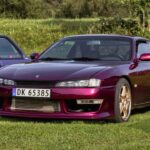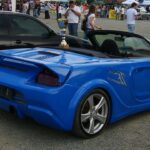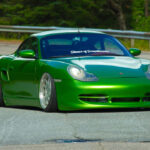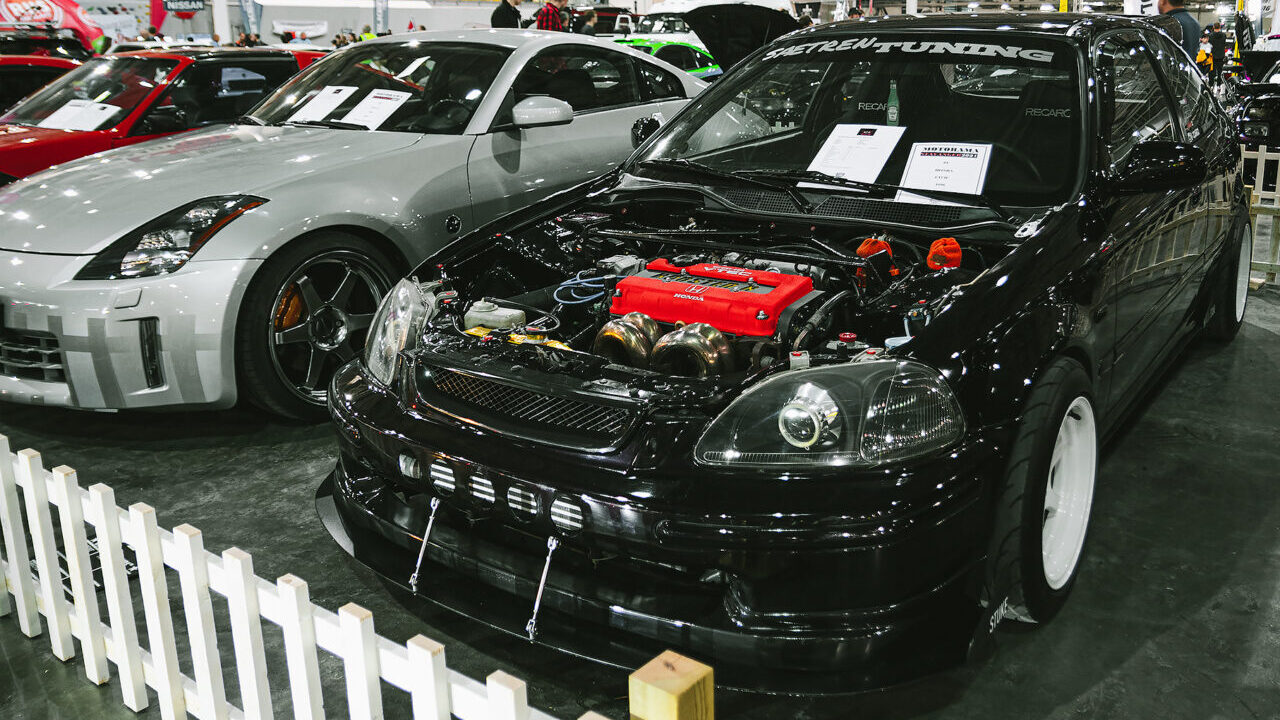
Sigve, a 26-year-old restaurant manager, let me take a closer look at his 1996 Honda Civic EJ9. Technically, there isn’t much left of what was once a stock 90-horsepower 1.4-liter Civic iS, as these days, you’ll find a turbocharged B16 engine under the hood.
His Civic adventure began in 2017, and since then, he has owned six of them. The first one he got his hands on cost just €1,500 — not bad for a small car with 160 horsepower — but unfortunately, it was in an accident and ended up looking like an accordion.
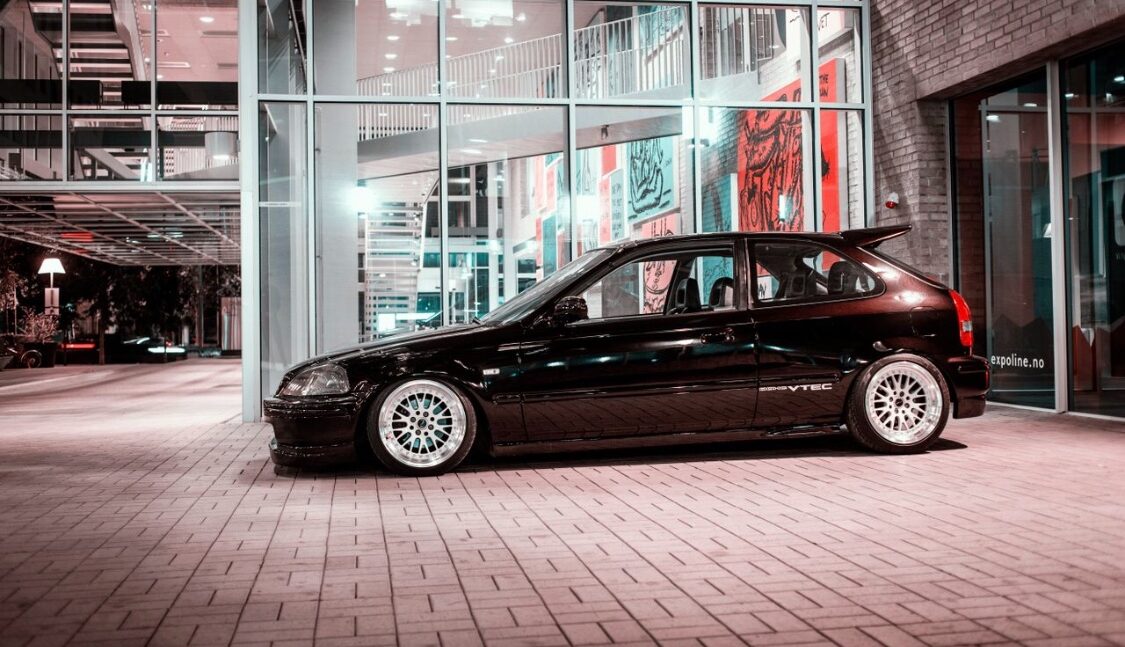
That didn’t stop him, though. In fact, it only helped fuel his passion, leading to his next car, a 2002 Civic Type R with the larger and more powerful K20 engine. He soon realized he preferred the B16 engine from his previous Civic, so in 2019, he jumped at the chance to buy the car you see in these pictures.
It’s worth mentioning that while this car had already been officially approved as modified from a 90-hp base model to 160-hp, it was nowhere near as wild as it is now. Countless hours and money have been thrown at it in order to build a Civic that stands out from the crowd.
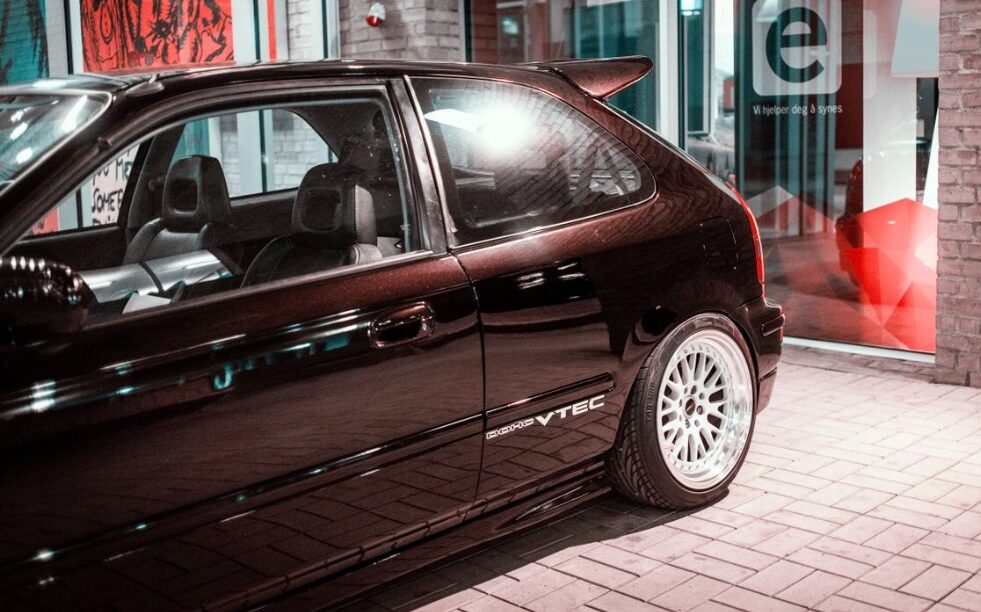
Unless you’ve spent the last 25 years living under a rock with no internet, you’re probably already aware that there’s a near-endless amount of parts available for this generation of Honda Civic. Even so, building a truly unique car can be challenging, as everything has seemingly already been done.
Sigve certainly isn’t a rock-dweller, he comes from a well-furnished home with good internet access, so he has seen plenty of cool EK Civics on social media.
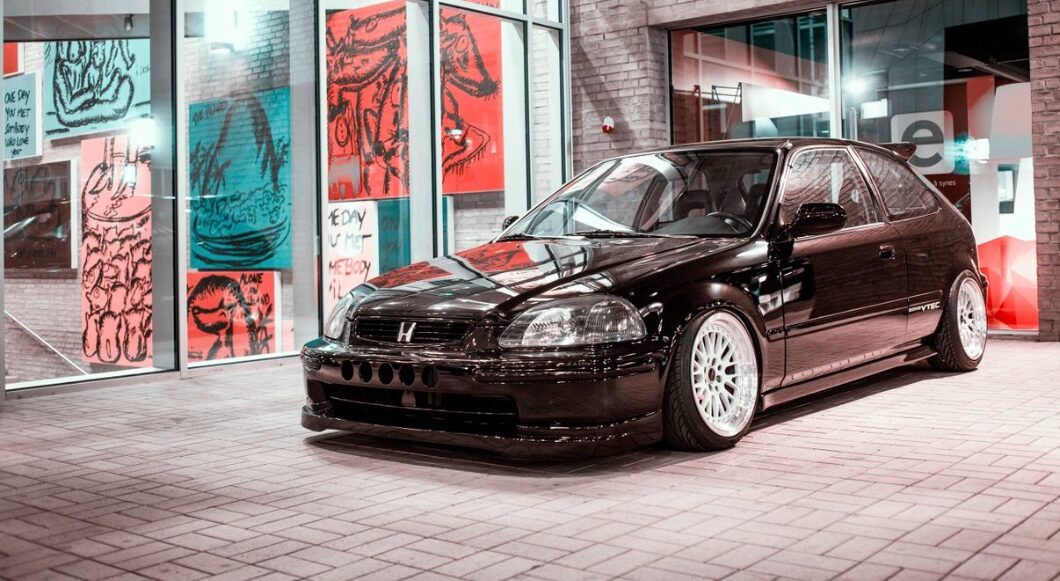
While they’ve served as an inspiration for this build, he hasn’t followed any specific style. Instead, he’s just cherry-picked what he thinks looks cool. Some exterior parts are exactly what I expected, based on today’s trends, but he has still managed to give it a personal touch.
One of the first things you notice about this modified Civic is the paint. Surprisingly, it’s actually an original Honda color (HON9884). Well, it’s not exactly an original factory color anymore, as it has been heavily modified with lots of pearl and flakes.
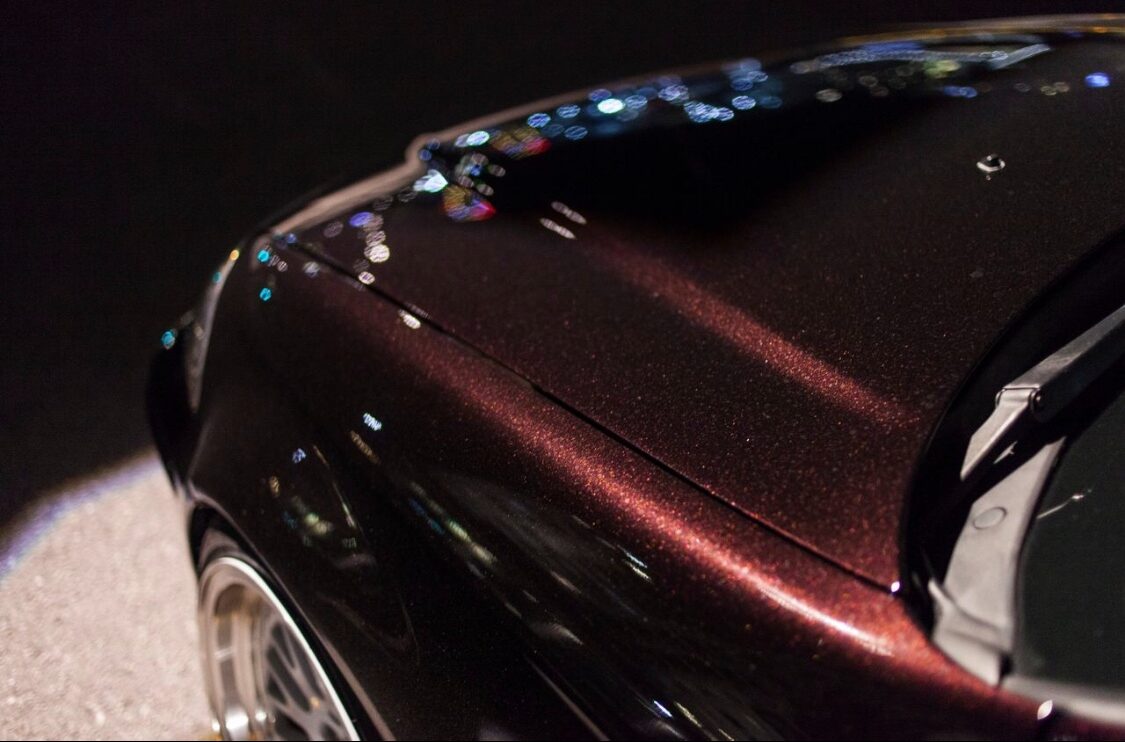
Beyond that, the exterior hasn’t been overhauled as much as one might initially think. At the front, there are custom-built bi-xenon headlights, there are now some holes (speed holes?!) in the original bumper where the license plate usually resides, an OEM front lip, and a STUKE front splitter.
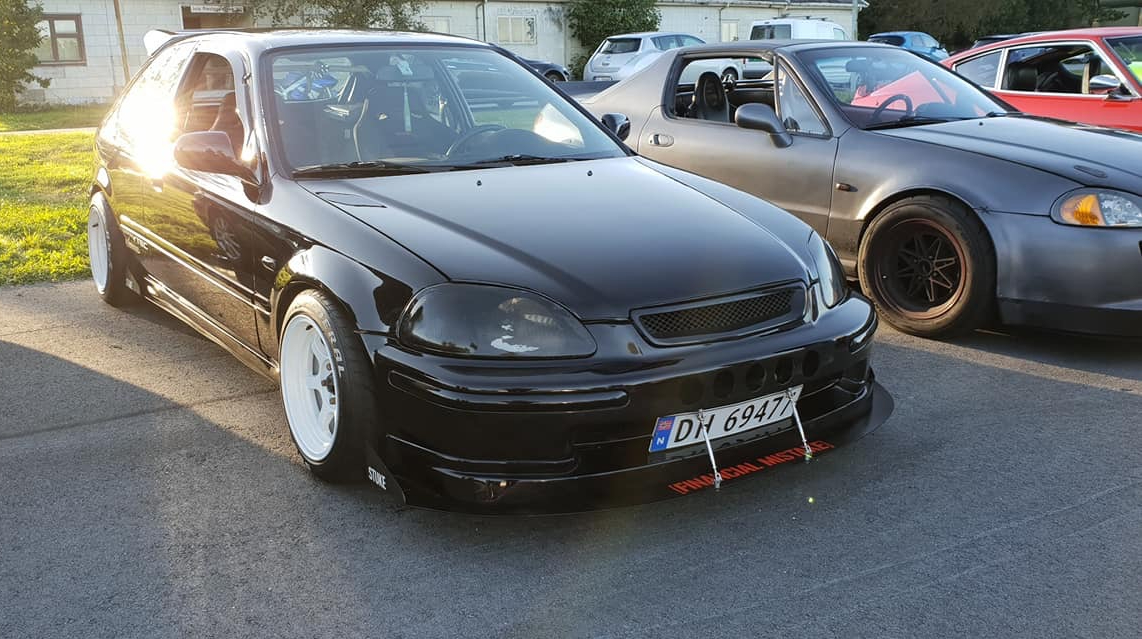
STUKE also provided the side skirt extensions and the diffuser under the rear bumper. Moving to the rear end, we find EK9 Civic Type-R taillights, an OEM mid-wing, and a large Bomex wing.
The wheels are 15-inch Japan Racing JR12, specifically 15×8.5 both front and rear, with an 18mm offset. These are wrapped in 205/50/15 Nankang NS2R rubber.
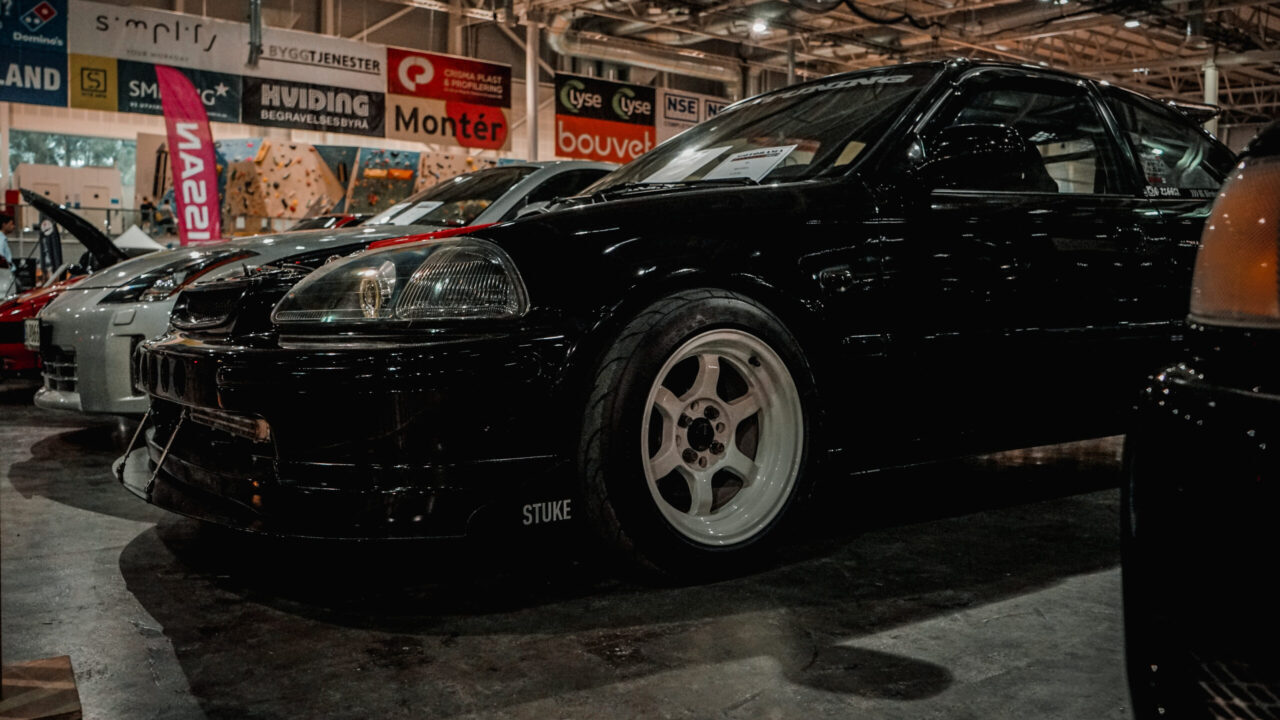
Maybe not the most extreme dimensions, but I think it looks fantastic — though one might question whether this setup is enough to keep the immense power in check.
Many associate this generation of the Honda Civic with budget-friendly cars that offer little power and usually decked out with a cheap bodykit and an overly loud exhaust, but Sigve’s car is an exception to the rule.
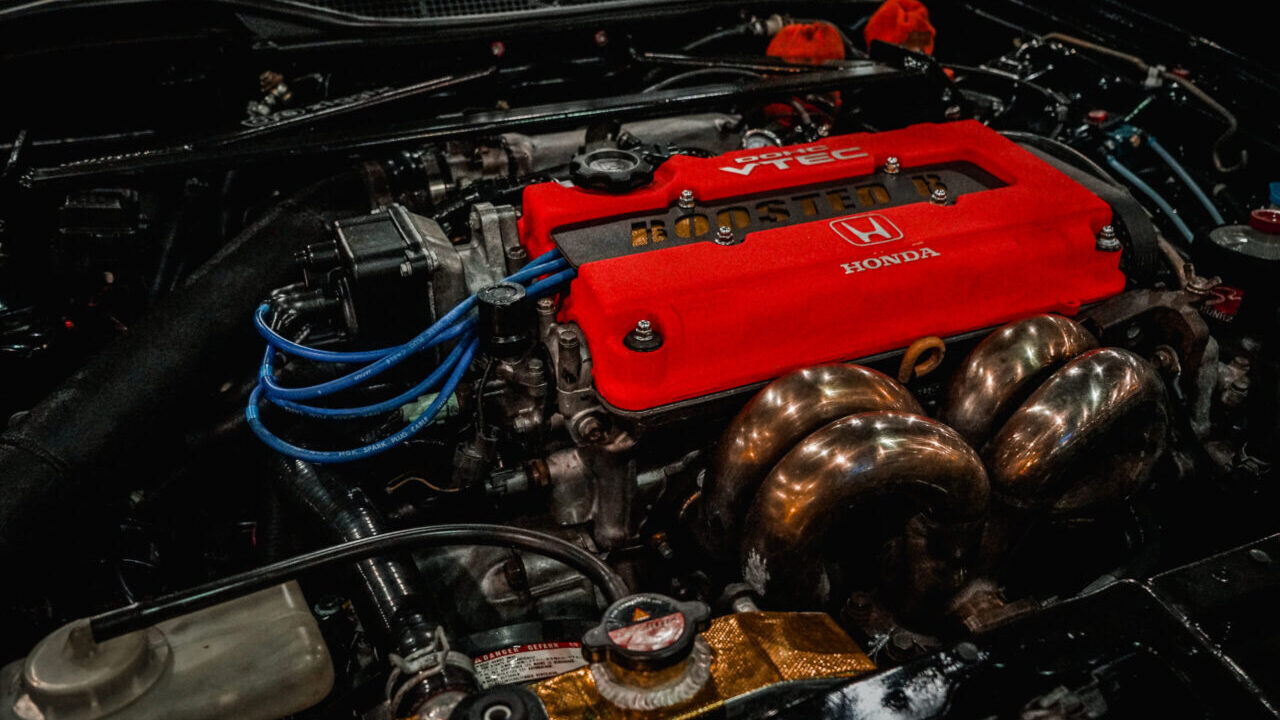
Unlike many other builders who plan everything down to the last detail, he prefers spontaneous creativity. However, with a constant desire for more power, a turbo was guaranteed from the start.
Under the hood is a B16A2 engine tuned to perfection. This is actually the third engine installed in this car, and the list of modifications reads like a dream spec sheet for any Civic enthusiast.

It includes forged CP pistons, Eagle H-beam rods, stage 2+ Skunk2 Pro cams, Supertech valves and retainers, a PPF intercooler, a Precision Turbo 5862 GEN2, a Fullrace exhaust manifold, a Tial 40mm wastegate, Injector Dynamics 1050cc injectors, a TI Automotive 425lph fuel pump, an AEM fuel rail and pressure regulator, a Delacruz Motorsport trigger kit with AEM adjustable cam gears, an AEM V3 methanol kit, and much more.
The list was so long that I couldn’t include everything, but some of it is listed at the end of the article.
Sigve can’t say for sure how much horsepower the car currently makes, but with the previous setup, it delivered around 400 wild ponies.
The current setup should definitely produce more. With a turbo capable of close to 700 hp, he hopes he has managed to extract around 500 horsepower at the front wheels — though he is the first to admit that anything over 400 front-wheel horsepower is useless. But hey, more is always better, right?!
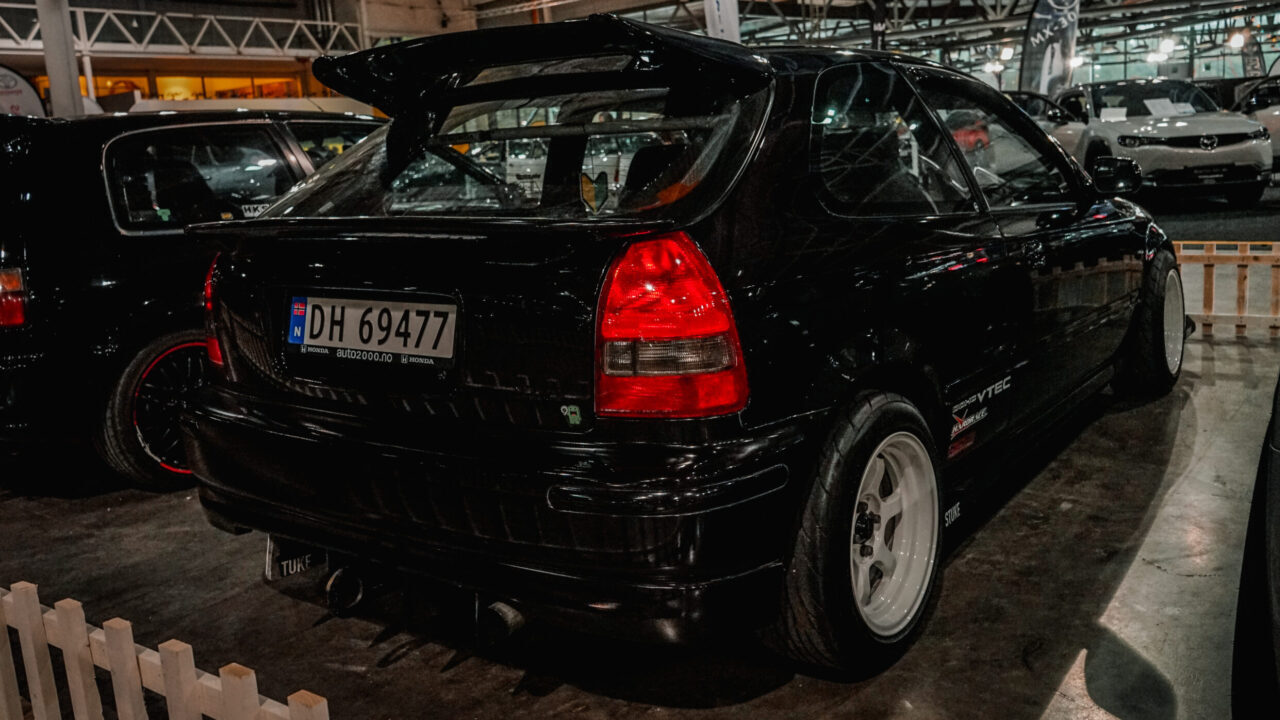
A serious drivetrain is obviously needed to handle this kind of power, so he has installed an S80 transmission with LSD from an Integra Type R, a stage 5 clutch, a lightweight flywheel, upgraded axles from Insaneshafts, and more.
The car hasn’t been dyno-tuned yet, so the exact power figures remain unknown, as does the 0-100 km/h (0-62 mph) time. However, the top speed is certainly much higher than what the speedometer can display — which was obviously tested on a racetrack, not public roads, as that would be illegal.
If there’s one thing Sigve regrets, it’s not using a proper tuner from the start. Tuning by trial and error with a friend resulted in engine failure, so his plan to save money ended up costing more than hiring someone to get it right the first time around.

His goal now is to get the turbo approved on the vehicle registration. He’s already in discussions with the authorities and they’ve confirmed that larger brakes and an emissions cycle test at TÜV in Germany are required.
They’ve also given him approval to convert the car to AWD, provided it is done correctly.
Clearly, there is no shortage of plans — it all just comes down to time and money.
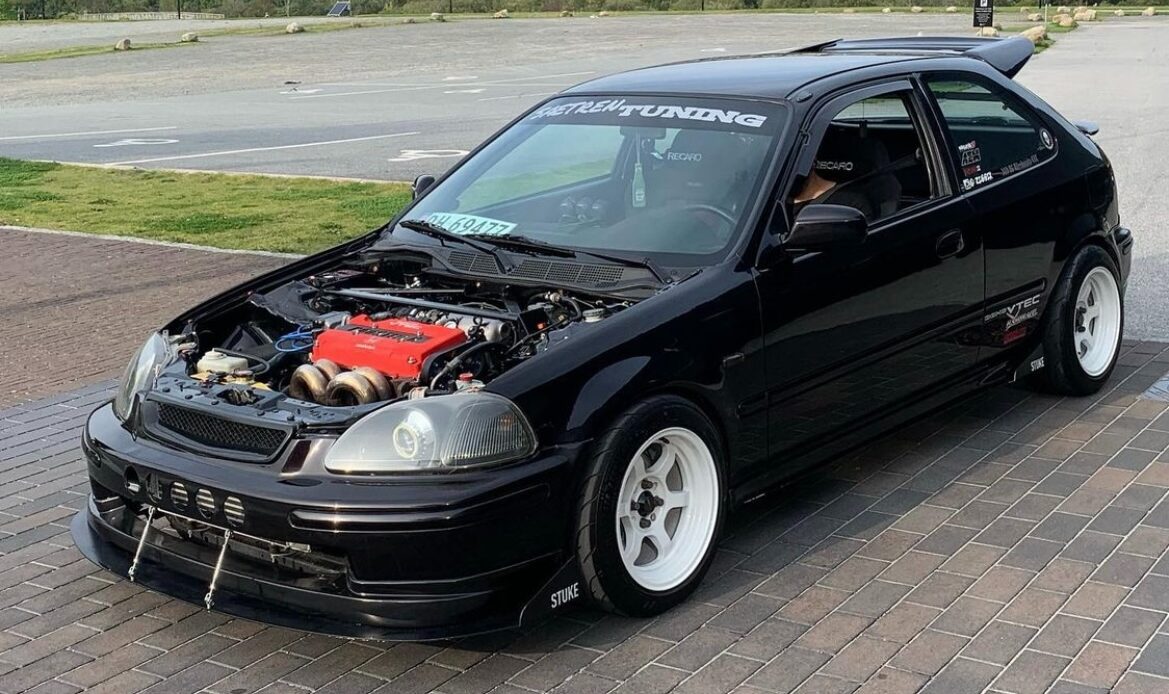
Sigve’s dedication to the Civic doesn’t stop at the engine. The car is fitted with KW V.2 coilovers, Hardrace bushings throughout the entire suspension, and camber adjustments.
The bushings were actually the first thing he replaced when he bought the car because they were, to put it mildly, awful. The improvement with new bushings was so remarkable that he considers it one of the best modifications to the entire car, and certainly the best value for money.
For now, the brakes remain the stock VTI setup, but as mentioned, they will be upgraded to match the powerhouse under the hood in order to make the Civic street-legal.
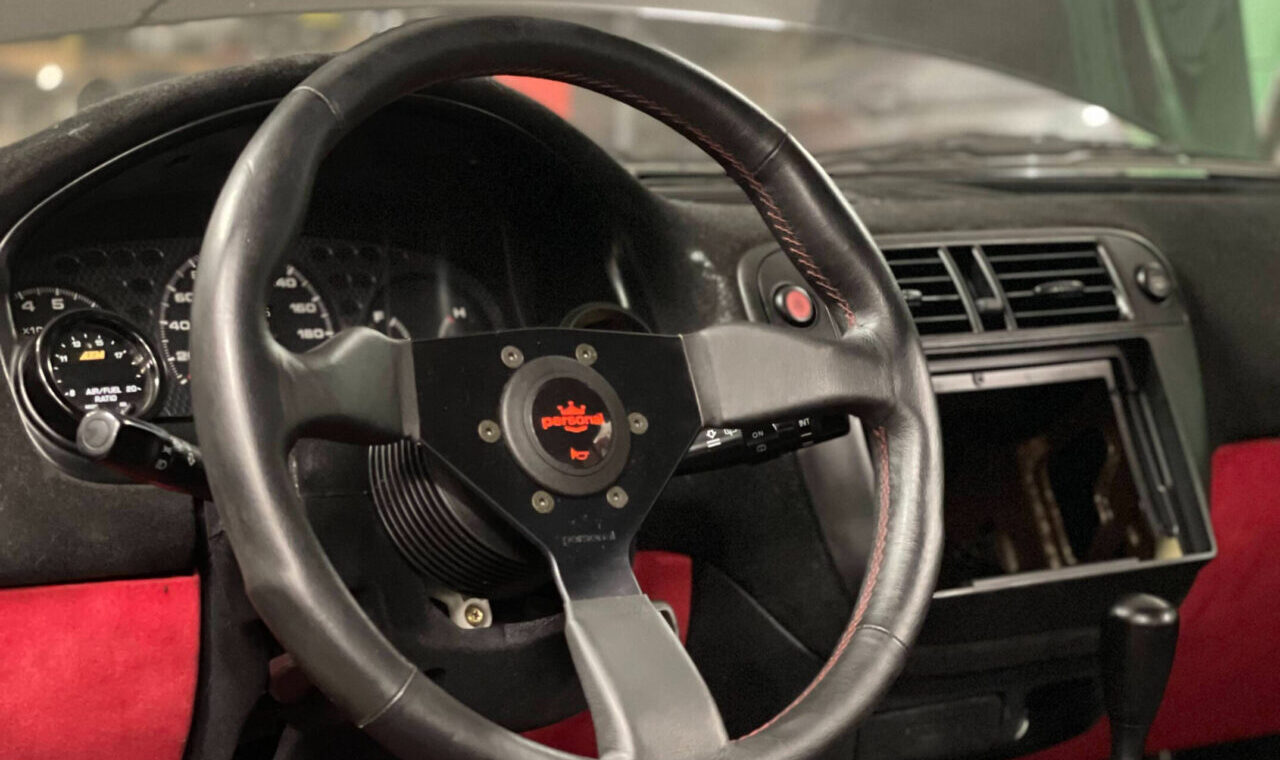
The interior in this modified EK Civic reflects its sporty exterior, featuring Recaro SR3 seats from a Mitsubishi Evo 4 mounted on modified Honda Integra Type R rails. In front of the driver, there’s a 330mm Personal Grinta steering wheel, a custom instrument cluster, and AEM wideband and boost gauges. He can also row through the gears using an IRP shifter,
The rear seats have been permanently removed with a JC_Clubsport rear seat delete, making space for just one passenger up front, and the floor carpet comes from an EK9 Civic Type R, while the rest of the interior is flocked or reupholstered.
This mix of JDM and personal touches showcases Sigve’s dedication to making his car stand out in the Honda community.
He has invested so much into it that he feels he has no choice but to keep and enjoy it as much as possible. Even his girlfriend has accepted that this car is here to stay — what more could a car enthusiast ask for?
Most of the work has been done by Sigve himself, but he has also received great help from Nilsen Motor, Tuninglabs, and friends — especially Trym Hauge and Jarl Alexander Nilsen.
Specs:
Make: Honda
Model: Civic EJ9 converted to EK4
Year: 1996
Engine:
B16A2
Supertech valves and retainers
GSC valves with thicker stems and Inconel on the exhaust side
GSC valve guides and seals
Light porting of the cylinder head
Skunk2 Pro cams stage 2+
CP forged 82mm pistons (10.1:1 compression)
Eagle H-beam connecting rods
ARP head, frame, and rod bolts
Maxxecu Sport
PPF intercooler
Precision Turbo 5862 GEN2
FullRace exhaust manifold
Tial 40mm wastegate
PPF BOV
Injector Dynamics 1050cc injectors
TI Automotive 425lph fuel pump
Radium twin pump fuel pump hanger
AEM fuel rail and fuel pressure regulator
Bosch 68mm electronic throttle body
Bosch ignition coils instead of a distributor
Delacruz Motorsport trigger kit with AEM adjustable cam gears
AEM V3 Methanol kit
Transmission:
Competition 4-puck stage 5 clutch
Competition lightweight flywheel
S80 gearbox with LSD from an Integra Type R
Speedfactory stiffened gear springs
IRP shifter
Insaneshafts upgraded driveshafts
Power Output: Currently unknown with the latest setup. Targeting 500+ hp at the front wheels.
Torque: Unknown
Boost Pressure: Unknown
0-100 km/h: Unknown
Top Speed: More than the speedometer can display
Styling/Exterior:
Diffuser, side skirt extensions, and front splitter from STUKE
Original VTI front and rear lip
Original VTI front and rear bumper (slightly modified)
Bomex spoiler
OEM midwing spoiler
Custom-built bi-xenon headlights
Taillights from EK9 Civic Type R
Paint: HON9884 with flakes and pearl effect
Interior:
Mitsubishi Lancer Evo 4 Recaro SR3 seats with modified rails from Honda Integra Type R
Rear seat delete from JC_Clubsport
Personal Grinta 330mm steering wheel
Flocked interior
Civic EK9 Type R carpet
IRP shifter
Custom instrument cluster
AEM wideband and boost gauge
Chassis & Brakes:
Original VTI brakes front and rear (to be upgraded)
KW V.2 coilovers
Hardrace bushings throughout the chassis
Hardrace camber adjustments
Hardrace brake stopper
K-Tuned traction bar with engine stabilizer
Wheels & Tires:
Japan Racing JR12, 15×8.5, ET18
Nankang NS2R 205/50/15
